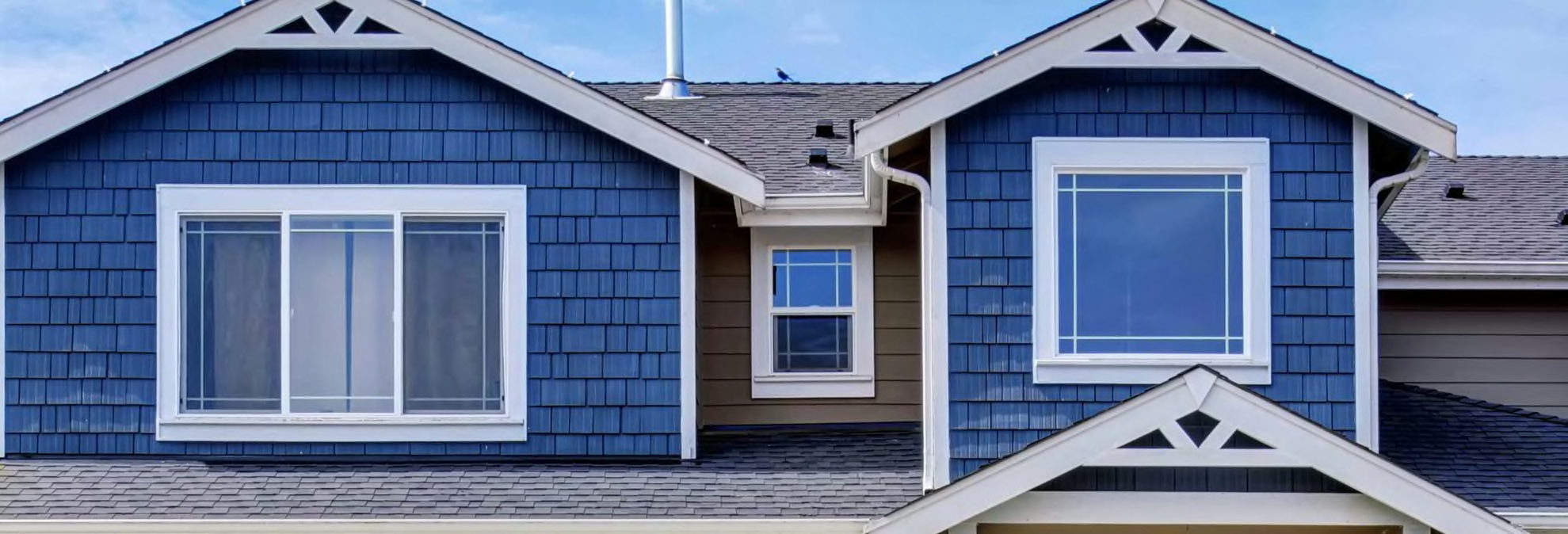
Siding Buying Guide

New home siding is a costly upgrade, but it can improve your home’s curb appeal instantly. The large price tag may be well worth it, given the relatively high return on investment for new siding compared with other remodeling jobs.
In JLC the Journal of Light Construction’s 2025 Cost vs. Value report, replacing vinyl siding recoups 97 percent of its cost at resale, based on average job costs and resale values nationwide. Installing fiber cement siding, a wood-look product that’s more expensive than vinyl but less costly than the real thing, recoups 114 percent of its cost. Only four remodeling jobs do better. (At the top is replacing a garage door, which is estimated to recoup—if you can believe it—268 percent of its cost.)
All this is good news, considering how expensive new siding can be. The average vinyl job costs nearly $18,000, and the average fiber cement redo tops $21,000, according to JLC. So doing your homework before you buy is essential.
At Consumer Reports, our testing shows significant performance differences among siding types and brands. Some siding is far less resistant to cracking from impacts (for example, a branch falling against the side of your house), and some siding is less likely to stay put in a windstorm, based on the simulated 150-mph winds used in our testing. We also find that some siding made from vinyl (still the bestselling material) is more prone to color change under ultraviolet light. That’s something to consider, especially if you live in a sunny climate or you don’t have trees to provide shade.
Use this guide to determine which material—vinyl, wood, or an alternative siding, such as fiber cement or plastic—best suits your taste and budget.
How CR Tests Siding
In our tests, we evaluate vinyl siding products made of polyvinyl chloride (PVC), as well as alternative siding products made of fiber cement, polymer, or a combination of PVC foam and other materials. Here’s what we measure in our siding tests.
- Color change: We subject light-colored siding samples to 1,000 hours of ultraviolet light, about twice the strength of sunlight. These accelerated weathering tests mimic the exposure siding would encounter on an actual house. We then compare the color change with the original, unexposed panels.
- Impact resistance at warm and cold temperatures: To assess how well siding resists damage from falling objects and other mishaps, we release a weight from different heights onto the seam of overlapping siding panels at both 0° F and 70° F. Then we evaluate any damage.
- Wind: To gauge siding’s ability to stay attached to a house during a windstorm, we subject siding attached to wood studs to an environment that simulates high winds. The best products stay attached at simulated winds exceeding 150 mph.
What to Know Before You Buy
Thanks to better graining and deeper profiles that cast wider shadows, some vinyl, plastic, and synthetic siding will give you the look of wood for a fraction of what you’d pay for the real thing.
Get the Most for Your Money
You might be tempted to “save money” by placing a new layer of siding over an old one, but removing old siding and starting from scratch is generally a better approach. “Removing the old layer will reveal any damaged sheathing that might need repair,” says Rich Handel, who has overseen siding testing at CR. He says that putting a new layer over an old one might make your house look strange. “Windows and doors could appear inset,” he says.
In fact, if you expect to replace windows in the next few years, a good time to do so is when you’re re-siding. You’re going to have to remove siding when you install new windows anyway—unless your plan is to use replacement windows. In that case, you’ll be placing a frame inside a frame and won’t disturb the siding.
You can save by keeping your siding choices simple. Details such as scalloped edges, cedarlike shake, and barnlike board and batten can be more expensive than traditional straight-edged panels. Mixing patterns can also cost more; abutting two different styles so that they remain watertight can require extra labor.
Have Your Siding Installed Right
Siding can refresh a house’s appearance, but it can also create an eyesore by buckling or warping if it’s improperly installed. Even worse, shoddy installation can allow moisture to seep into the home’s structure, where it could cause mold or rot, compromising the house’s integrity.
So we recommend having a professional install your siding. To increase the chances of finding a capable contractor who will do the job right—and be available to fix any problems that might arise—look for siding installers who have been working in your area for at least five years, and check their references.
Contractors certified by the Polymerics Exterior Products Association (PEPA) have been trained in the best installation practices and can be found through the PEPA website. The websites of some vinyl siding manufacturers also have search engines to help you find reputable local installers. As with any contractor, check local and state licenses, Better Business Bureau ratings, and certificates of insurance.
Be a Smart Shopper
When you interview contractors—CR recommends speaking to at least three—make sure to request all-inclusive price estimates. To make comparisons, you’ll want to know the total price for materials, labor for teardown and installation, and disposal.
Even if the installation price is firm, you can ask a siding company to offer an upgrade or other enticements, such as free gutters and leaders. And don’t assume that the contractor or retailer offers the best financing. You might find better terms from a bank or credit union.
Also, ask installers to explain the company’s workmanship warranty. Examples we’ve found online range from one year to a “lifetime,” and don’t always detail what they cover. Most warranties for the siding in our ratings protect against product defects for the first homeowner’s lifetime; for a second owner, the warranty is typically 50 years, prorated from the time of installation.
Make It Last
You can extend the useful life of your siding with simple maintenance and repairs. Wood and fiber cement siding are susceptible to leaks, especially where the siding meets windows and doors; five dollars’ worth of caulk added to the butt joints, corner joints, and areas around windows and doors could ultimately save you thousands of dollars in structural repairs. If you live in a region with cold winters, inspect the siding under the eaves for water stains, which may indicate ice damming. Adding attic insulation and sealing any gaps around pipes and ducts in the attic may help prevent future damming—and may lower your heating and cooling bills as well.
When siding is properly installed, any water that gets under the siding should drain, and the underlying sheathing and framing should dry. But water driven behind siding from pressure washing may remain, and surfaces that stay wet can rot or become moldy. To prevent that, CR recommends not spraying directly into gaps. As an alternative, you can clean siding with soapy water and a soft-bristle brush on a pole, then rinse the surface with a gentle spray.
Siding Side by Side
Weigh the look you like against upkeep and cost. Prices listed in our ratings are per square (100 square feet). Figure on 25 squares and $10,000 to $32,000 in labor for a typical 2,500-square-foot house, based on estimates by HomeGuide, a home-services marketplace. Here are the types of siding to consider.
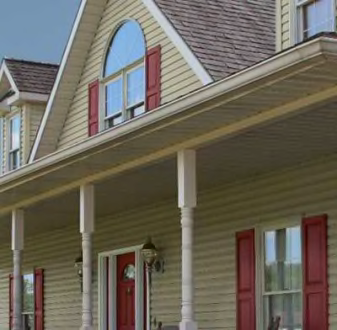
Vinyl Siding
Low price and minimal upkeep make vinyl the most widely sold siding material by far. Vinyl needs no painting. It won’t warp or twist, and it’s impervious to insects and water. But it can rattle, crack, melt, and burn. Some vinyl products may look like wood from a distance, but not up close. Before you settle on vinyl, consider your style preference and whether the architecture in your neighborhood makes the added realism and cost of plastic, fiber cement, or even real wood a more appropriate choice.
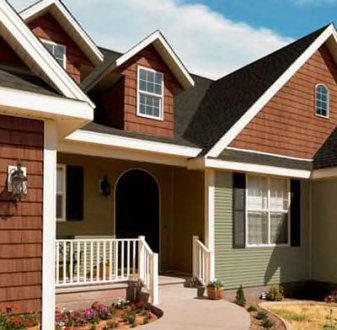
Plastic Siding
These shingles and shakes can closely resemble cedar, even up close. Plastic, like vinyl, requires minimal upkeep. However, plastic is much thicker than vinyl and can be two to three times more expensive.
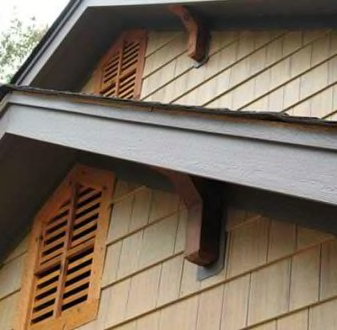
Alternative Siding
The alternative siding category comprises siding products made of composites such as fiber cement, a blend of cement, sand, and cellulose that looks the most like real wood. (Hardie Plank is one widely known brand.) Fiber cement siding is fireproof and insectproof, but it can be damaged by water during freezes and thaws if its paint is allowed to degrade. It comes factory-primed but can also be ordered prepainted for a higher cost. While your color selection is limited, factory coatings tend to last much longer. Whether primed or prepainted, fiber cement must be refinished periodically, though less often than wood.
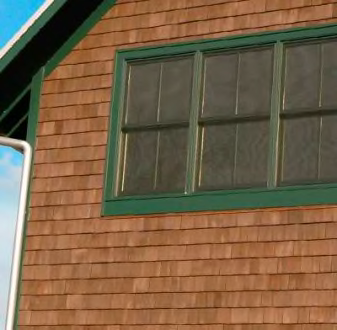
Wood Siding
Although wood shingles and clapboard offer traditional charm, they’re very expensive—wood clapboard is less expensive than shingles but still costs more than vinyl or fiber cement. Wood is resistant to impact but can warp, twist, and burn. And it’s vulnerable to rot, insects, and woodpeckers. Wood can be finished or left natural, and it’s available factory-primed or both primed and painted. (As with fiber cement, factory finishes cost more and come in a limited color selection, but they might last longer.) If it’s painted or stained, it requires periodic refinishing.
Features to Consider
Certain attributes can enhance the appearance and durability of siding.
- 1
- / 4
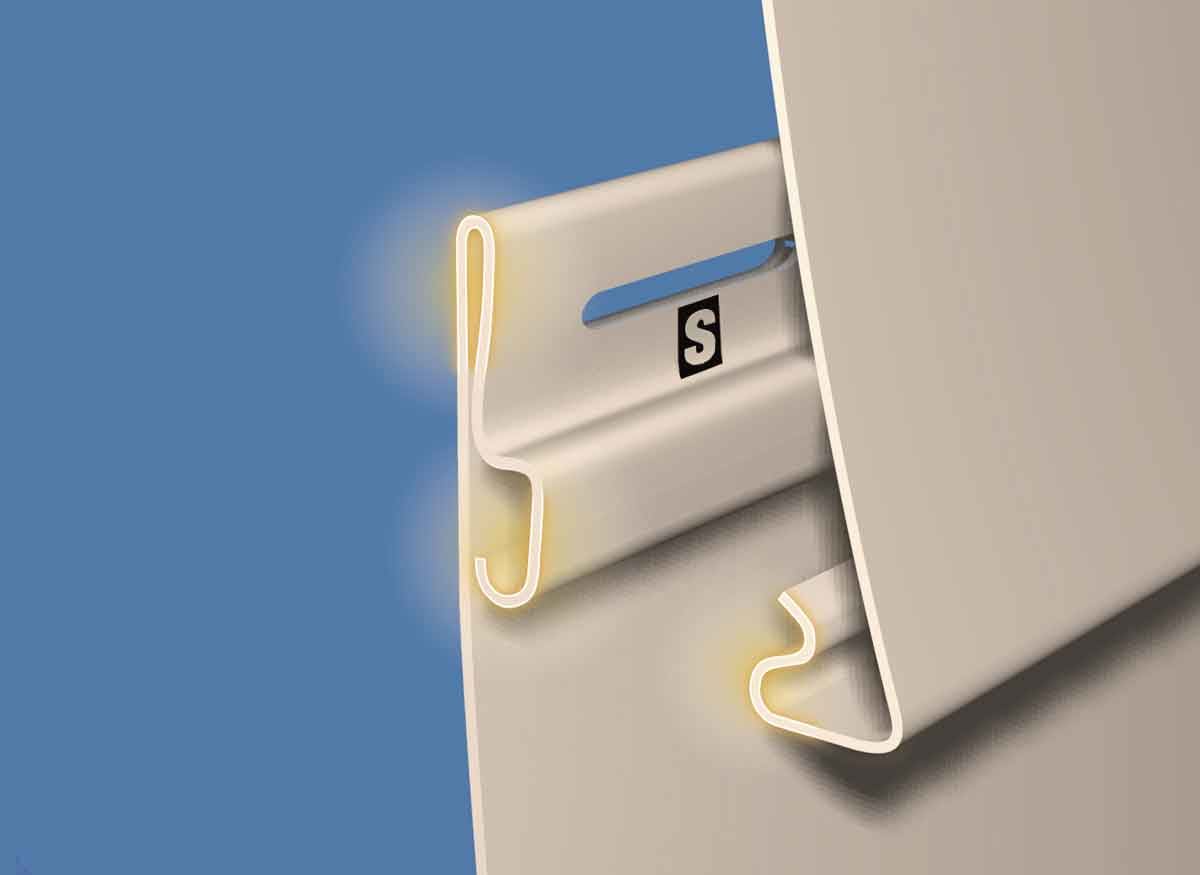
Double-Hem Nailing Area
The best vinyl siding features a double-layer mounting hem, providing a stronger attachment and better resistance to high winds compared with a single-layer hem.
PHOTO: CERTAINTEED
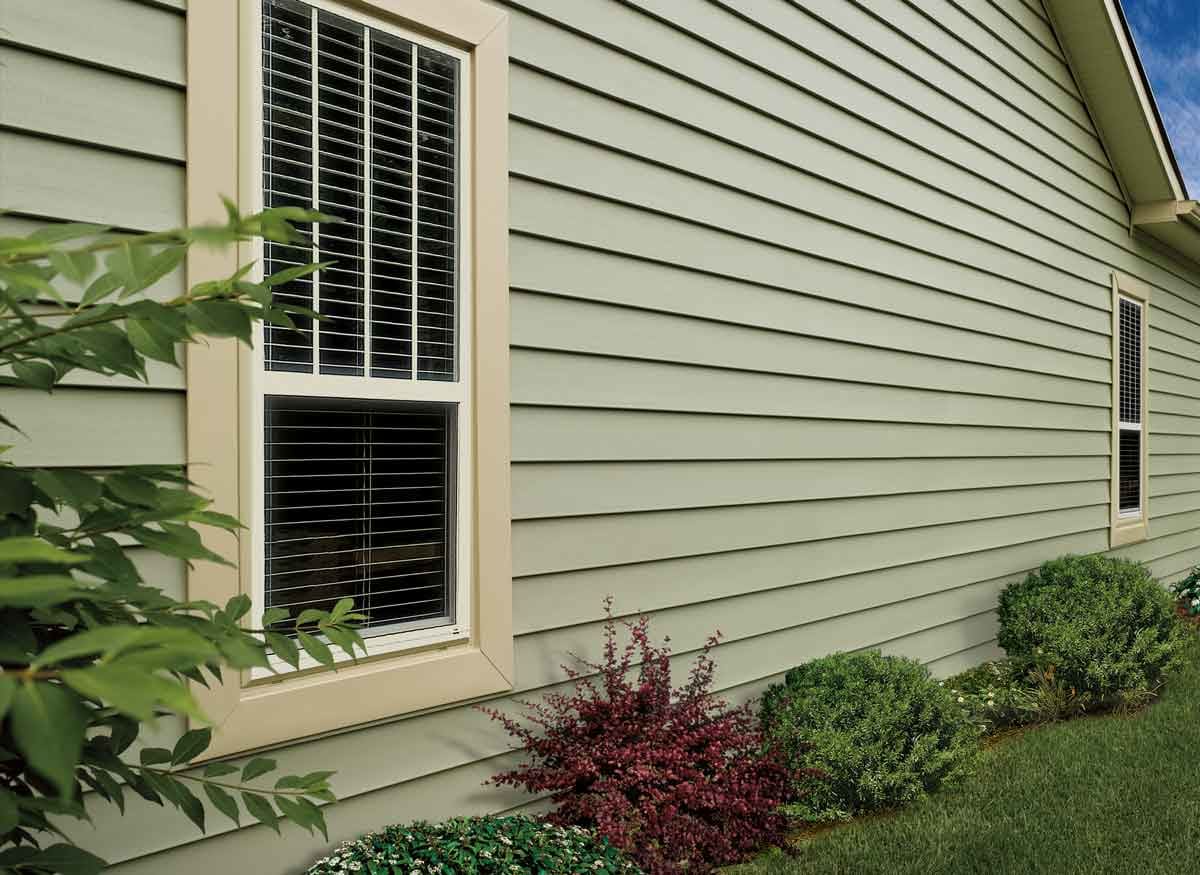
Extra Long Panels
Some vinyl siding comes in lengths of 16 feet or longer to reduce the number of seams on long, unbroken walls.
PHOTO: CERTAINTEED
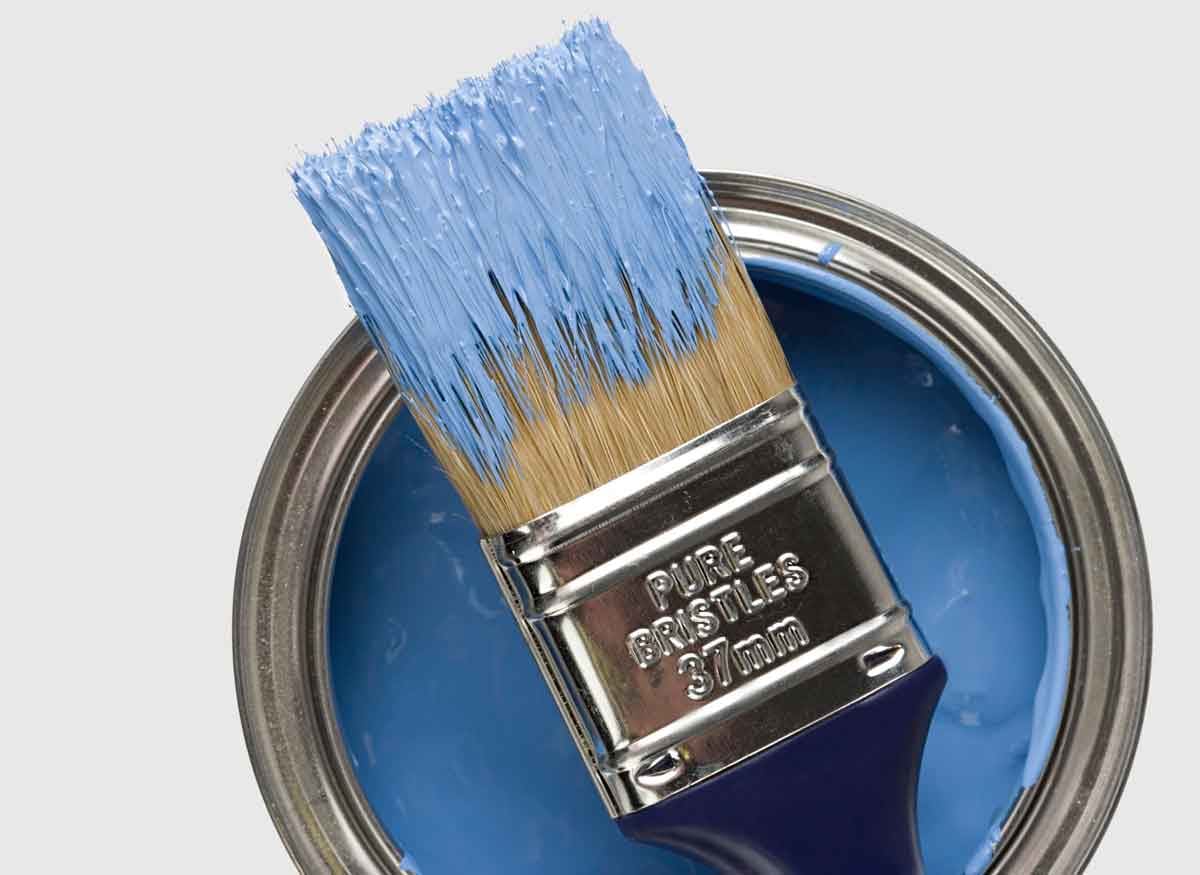
Siding Finish
For fiber cement, consider whether the added color choices and cost savings of painting it yourself outweigh the increased durability of a factory finish.
PHOTO: GETTY IMAGES
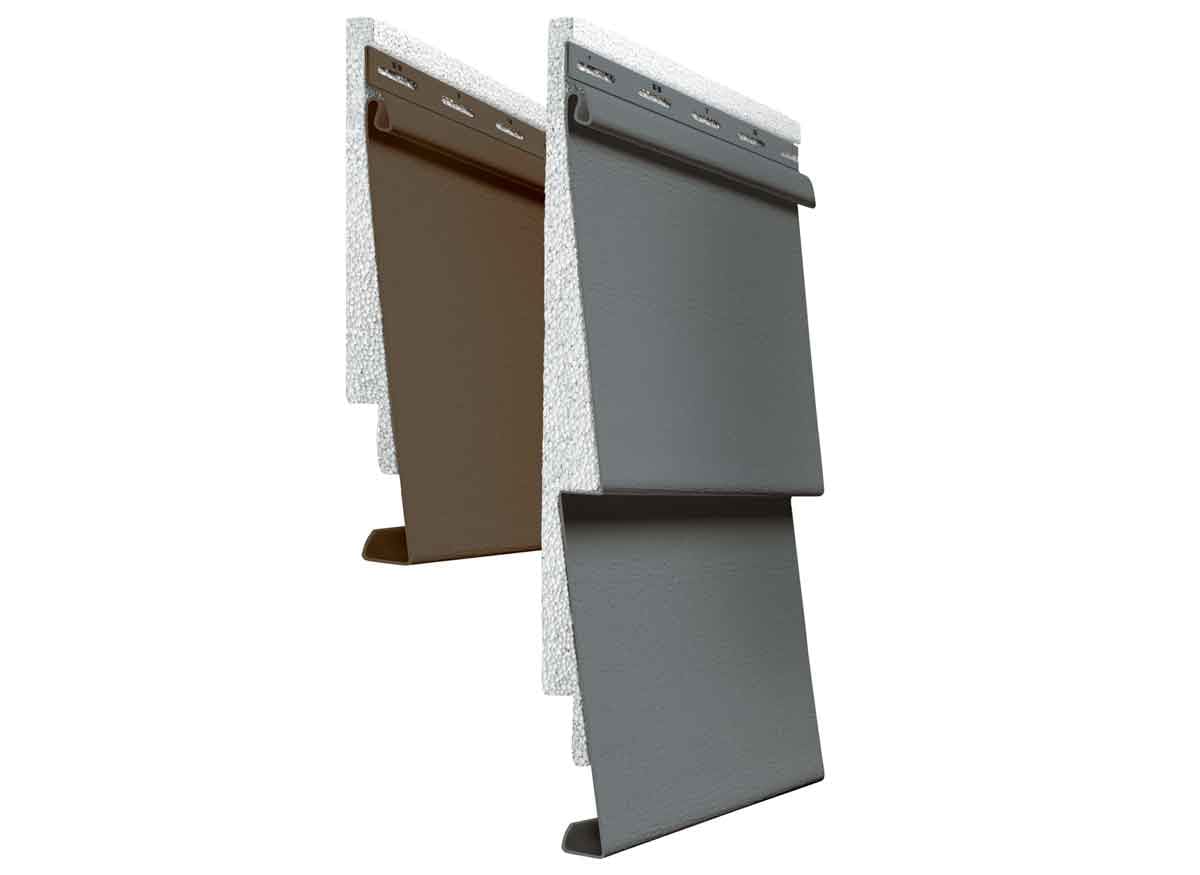
Foam Backing
In addition to making vinyl siding more rigid, foam backing adds insulation.
PHOTO: CERTAINTEED
Double-Hem Nailing Area
The best vinyl siding features a double-layer mounting hem, providing a stronger attachment and better resistance to high winds compared with a single-layer hem.
PHOTO: CERTAINTEED
Extra Long Panels
Some vinyl siding comes in lengths of 16 feet or longer to reduce the number of seams on long, unbroken walls.
PHOTO: CERTAINTEED
Siding Finish
For fiber cement, consider whether the added color choices and cost savings of painting it yourself outweigh the increased durability of a factory finish.
PHOTO: GETTY IMAGES
Foam Backing
In addition to making vinyl siding more rigid, foam backing adds insulation.
PHOTO: CERTAINTEED



























